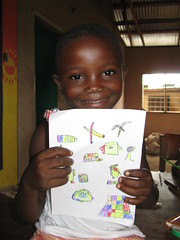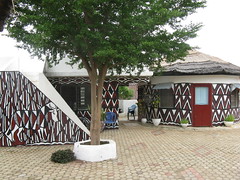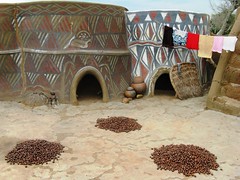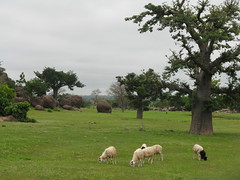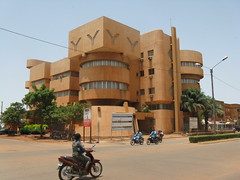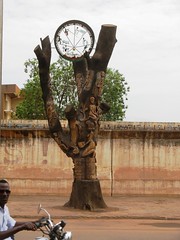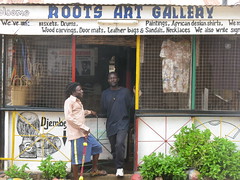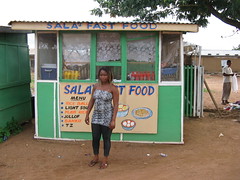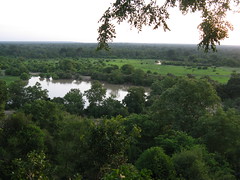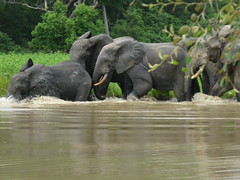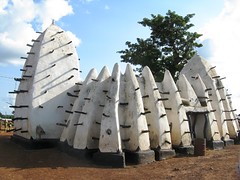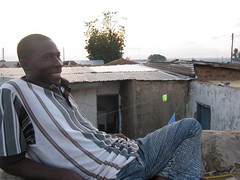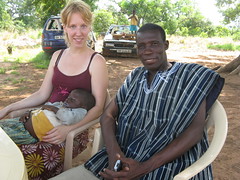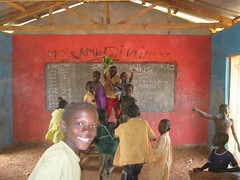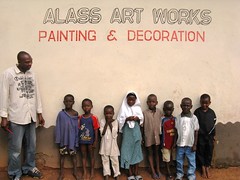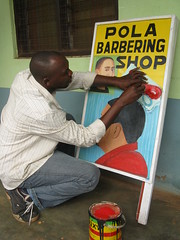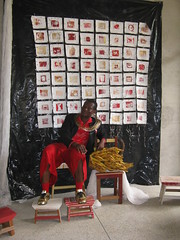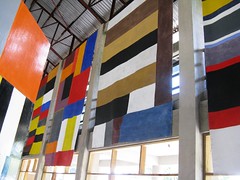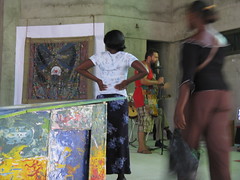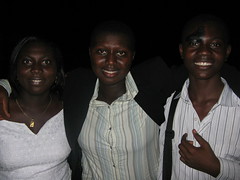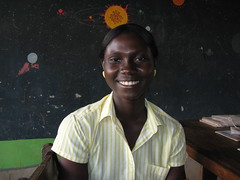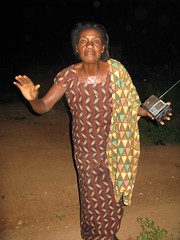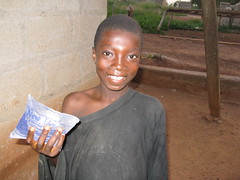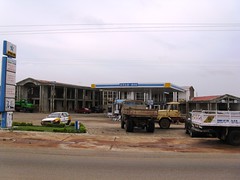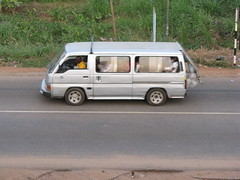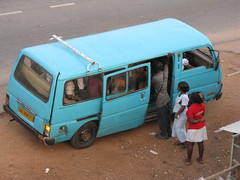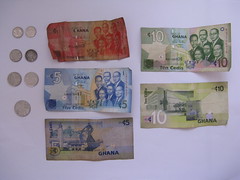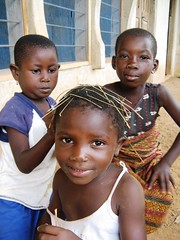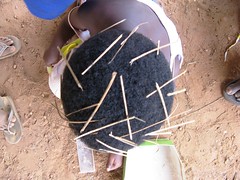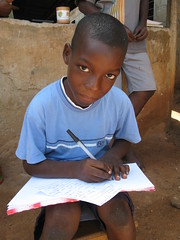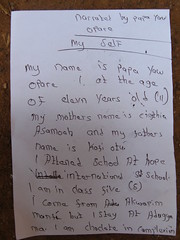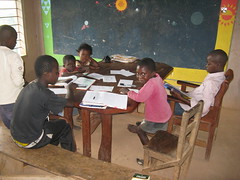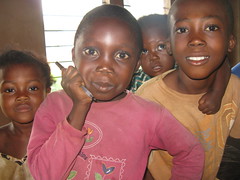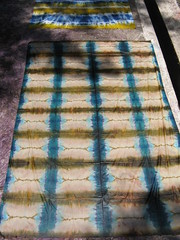Hello Everyone,
You are cordially invited to a one day exhibit and reception of art work by Daniel Kerkhoff, the children of Adugyama, and guests.
When: Saturday, October 31st, 12pm to 5pm.
Where: The Area Council Hall, Adugyama, Ashanti Region, Ghana
Adugyama is 45 km northwest of Kumasi on the Sunyani Road. The Area Council Hall is across the street from the MTN tower.
We hope to see you there. Everyone is welcome!
Reception/Receptions
Reception n. 1. an act or process of receiving; a reaction to something.
2. an assembly held to receive guests. --Oxford English Mini Dictionary
Since April, I have been an artist-in residence in Adugyama,.Ghana and have been running an informal drop-in center for children, providing books, paper, pens, pencils, and colored pencils. Children from the neighborhood stop by, draw, and look at the books available.
The children are all ages and draw in a variety of eclectic styles. Some have focused on drawing animals, cars, airplanes, computers, houses, football players, scenes from village life, planets and stars, trees and nature scenes and many other things. Some have been drawing patterns, focusing on shapes and lines, and creating unique compositions. Many of their drawings will be in the exhibit, and you can see some of them on my flickr site, www.flickr.com.
http://www.flickr.com/photos/23472741@N05/sets/72157617821705408/
Also, children/adults from Lisbon, Portugal; Mobile, Alabama, U.S.A. ; and Minneapolis, Minnesota, U.S.A. have also sent some artwork to the village and this will be included in the exhibit as well in The Obruoni Gallery.
I have been doing my own art using pens, pencils, a water color set, a ream of A4 computer paper, a gallon of acrylic house paint, the dirt and charcoal around his residence, and vegetable and palm oils. Many of my dirt paintings have evolved into large collages.

"Mekwabaa (Fermentation of the Cacao Pod) by Daniel Kerkhoff, Adugyama, Ghana
Originally uploaded by Daniel Kerkhoff
These collages relate to my own preoccupations, interests in symbols and shapes, and my personal aesthetic sensibilities interweaving with my experiences in Ghana and the village of Adugyama. I see them as acts of receiving and discovery; they are my journal of witnessing that also honor those mysteries that transcend narrow definitions and rigid labeling.
Mortars and pestles, basins, yams, mobile phones, Adinkra symbols, cacao pods, footballs (soccer balls), stars, tea bags, benches, and ladders have all grabbed me in one way or another and made there way into these pieces. These large scale collages have also taken on a hide, animal skin-like quality. In November, I will fold them up, put them in my suitcase, and return with them back to the U.S. to show. Hopefully, they will become acts of sharing as well and become a part of the Great Weaving Project that has been going on for a long time now.
The children's art of Adugyama will be shown again in June, 2010 at Homewood Studios (www.homewoodstudios.com) in north Minneapolis, MInnesota. Homewood Studios is owned by George and Beverly Roberts who have stayed in the village of Adugyama and have many connections here. Their son, Andrew, was the Peace Corps volunteer in Adugyama for three years and the reason why I am here. Many thanks to them for introducing me to the people here, for all the work that they've done in the communities of Adugyama and north Minnneapolis, and for their encouragement.
I will also have a solo show of my art in June 2010 in north Minneapolis at The Warren-An Artist Habitat, www.thewarrenhabitat.com.
James Joyce had written, "History is a nightmare that I'm trying to wake up from." From Mankato, Minnesota to Adugyama, Ghana, to wherever you are, perhaps within the realm of the "nightmare", little "waking ups" are happening all the time. I use art and travel to try and wake myself up and also notice how much I am sleeping.
Ghana just won the FIFA under-twenty world championships beating Brazil in the final. The Ghana Black Satellites are the first African team to win the championship. Everyone is excited here. I watched the match in Adugyama (Adugyama just got electricity 10 years ago). I was with five boys, Yaw Bimpe, Kwaku Baah, Sadick, Yaw Gyamfi, and Agya. They were dancing, clapping, and shouting in our room and it was an amazing moment for them. Nana and Auntie Bea came in the room and celebrated as well. I took their photos, witnessed this moment, and will take it back with me along with so many other moments.
Many thanks to everyone I met and got to know in Ghana and to those of you reading and commenting on the blogs and photos. Many thanks to my family and friends for all of their support. And a special thanks to the people in Adugyama who helped me so much and shared so much of their lives with me; the family I lived with--Mr. Atta, Auntie Bea, Nana, Rose, Becky, Sara, Ama, Yaw Bimpe, Kwaku Baah, Jennifer, and Sandra. Meda se Pa Paa, Thank you very much!
Over the winter, I'll continue blogging, uploading more photos, reflecting on my experiences here and doing more art.
You can follow along at
http://danielkerkhoff.blogspot.com/
http://thejuderockfish.blogspot.com/
And my photos: www.flickr.com
http://www.flickr.com/photos/23472741@N05/
Nante Yie (walk well, safe journey), Keep in touch! --Daniel
Daniel Kerkhoff
Ph. 0278913055
rockfish65@yahoo.com
www.danielkerkhoff.com
http://mnartists.org/daniel_kerkhoff
